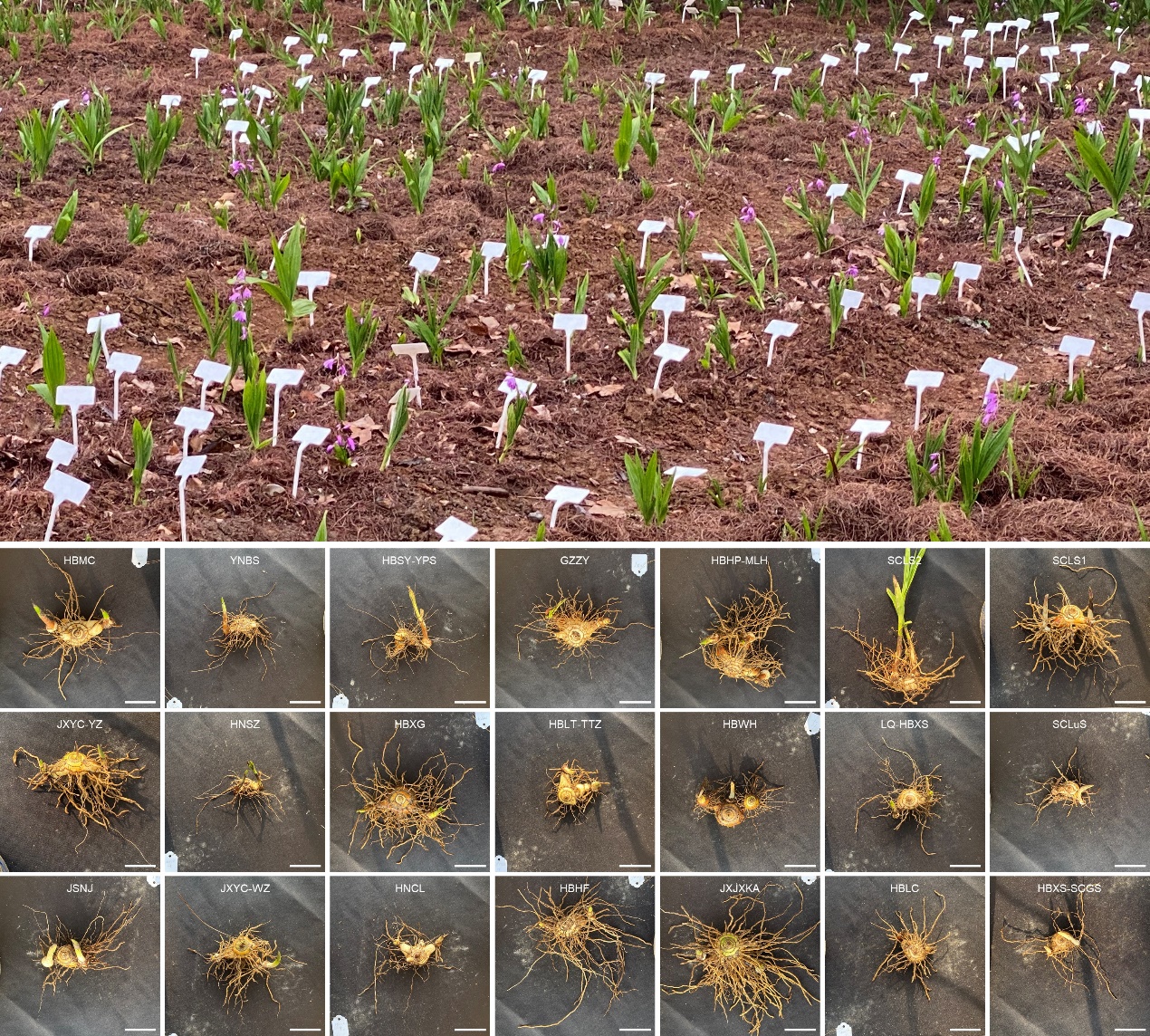Bletilla Rchb. f. (Orchidaceae) is a small genus with great economic value distributed in Asia, and China is the distribution center of Bletilla with four species. The dried pseudobulb of B. striata was recorded as BaiJi, and was first recorded in Shennong's Classic of Materia Medica. Nevertheless, a systemic evaluation of the germplasm quality of Bletilla plants in China is absent.
The Medicinal Plant Resources Group from the Wuhan Botanical Garden of the Chinese Academy of Sciences selected 33 Bletilla populations (including 28 B. striata populations and five B. ochracea populations), which covered their major distribution areas in China, to systematically evaluate the main phenotypic traits, pseudobulb yields and main active ingredients among different species and populations.
Based on the yearly results, the researchers screened excellent populations with higher yields and higher contents of polysaccharide, total phenol and militarine, respectively, indicating that these populations were good germplasm resources for the single-component utilization of Bletilla.
One population from Bozhou city of Anhui Province (AHBZ) and two from Hubei Province (Luotian, HBLT and Shennongjia, HBSN) had good characteristics in yield and quality, showing potentials for industrial development, according to the researchers.
There were significant correlations between pseudobulb weight, polysaccharide, total phenol contents, and other phenotypic traits, especially leaf blade width and stem diameter, which implies that plant with excellent growth can produce better pseudobulb yields. There was also a nearly negative correlation between militarine content and other indexes.
At the same time, they found that Bletilla was not strictly geoauthentic medicinal plants: different geographical populations in different provinces may have good quality and be excellent germplasm resources. Though B. striata is the only species officially approved for use, B. ochracea could be accepted as an alternative resource to B. striata because there is no difference between the two species in terms of polysaccharide, total phenol and militarine contents. Yearly content variation shows that the best harvest period of Bletilla is the third year after cultivation.
These results provide important information required for efficient screening and utilization of Bletilla germplasm resources.
Results have been published on BMC Plant Biology entitled "Phenotype correlation analysis and excellent germplasm screening of herb Bletilla Rchb. f. based on comprehensive evaluation from thirty-three geographic populations."
This work was supported by the National Natural Science Foundation of China and the Biological Resources Program of CAS.







